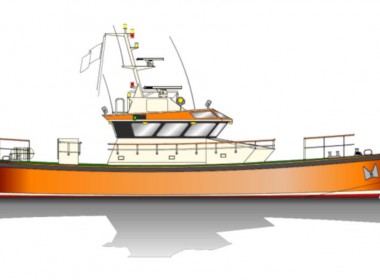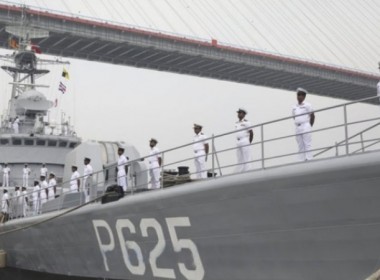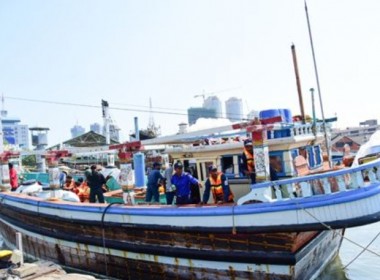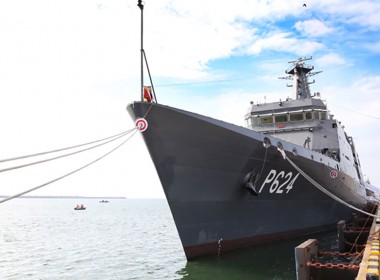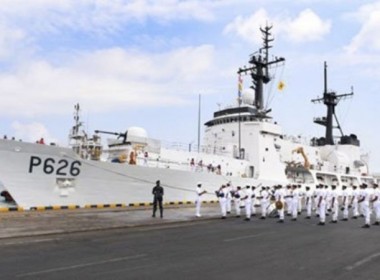FEATURE | Sri Lanka’s Hambantota – “the Chinese port”
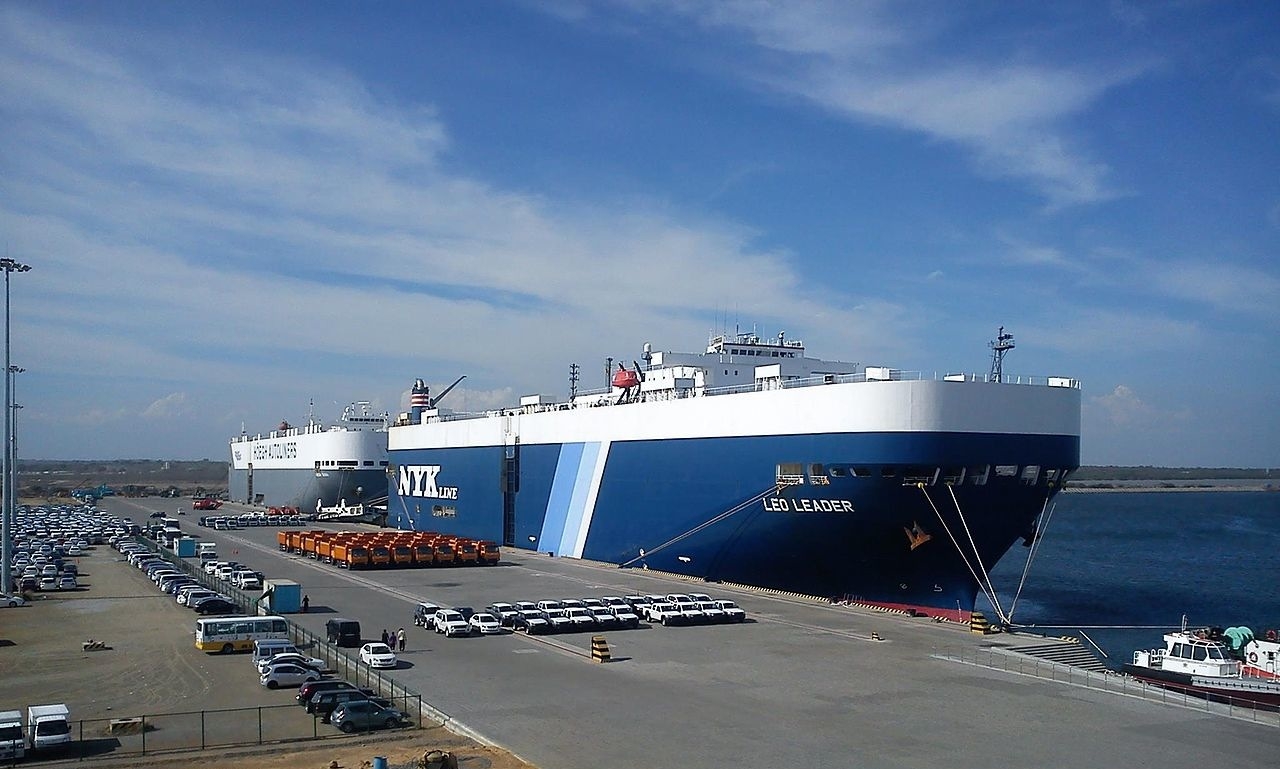
In early 2011, I was in Hambantota, southern Sri Lanka, looking for the new port. After hours of driving, from the southern beaches through kilometres of wetlands featuring water buffalo, ibises, and the odd elephant, through vivid green jungle as far you could see, the wilderness eventually gave way to sparse development, then to a small town.
This was Hambantota: at that stage nothing more than a few streets, a bus terminal, some squat government buildings, and concrete apartment blocks.
Stopping at a checkpoint, my driver asked the way to the new port that had recently opened – the purpose of our visit. “The Chinese port? It’s that way,” said an armed man, cocking his finger. It wasn’t clear whether he was government or private security.
As we drove further, we encountered more and more road signs in Chinese characters, then asked again for directions. “The Chinese port is over there,” said another armed man at another checkpoint. When we reached our destination we found it teeming with workers: most of them Chinese, and all wearing blue jackets with “China Harbour” emblazoned on the back.
Over the next couple of days I would hear the description “Chinese port” repeatedly. In 2011, it seemed accepted wisdom that the port development in Hambantota was, indeed, a Chinese one.
This prediction was realised last December when, saddled by unsustainable debts, the Sri Lankan Government agreed to hand over control of the Hambantota port and 15,000 acres of land around it to China, on a 99-year lease. The move raised eyebrows worldwide: many viewed it through the lens of rising concern over China’s moves to gain influence and power in the Indian Ocean region.
Even in 2011, the motivation for any move by the Sri Lankan Government to apparently cede a bit of its territorial sovereignty was understandable. This small country, reeling from decades of war, needed all it could get to propel the economy forward and fulfil the grandiose ambitions of its then leader, Mahinda Rajapaksa. In particular, Rajapaksa had a vision for the Hambantota region, where he grew up: to see it develop, flourish and prosper, and become one of the country’s major hubs.
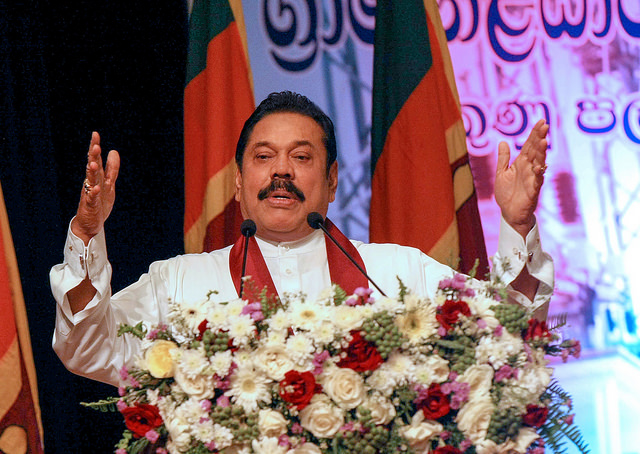
Looking around Hambantota, I quickly realised what a tall order this would be. The region, home to approximately 600,000 people, remained rural and backwards, despite being only a few hours’ drive from the country’s southern beaches, a major tourist drawcard.
With few influences from outside, it was isolated and underdeveloped, with very little to indicate why anyone might deem it a suitable destination for major infrastructural investment.
I was there to write on the development for a British magazine, after reading reports in Indian newspapers proclaiming that Hambantota would cement Sri Lanka’s future as the Singapore of the Indian Ocean. I quickly realised how far from the truth this actually was when locals excitedly told me they hoped the Chinese influx might mean the town would get its first stand-alone Chinese restaurant.
There was other infrastructural development in progress at the same time. Hambantota was also getting its own international airport – Sri Lanka’s second. At that point, it was nothing but a muddy slick of cleared land at the end of a desperately potholed and bumpy road, where no life form other than a handful of workers and the odd water buffalo could be seen.
Now Mattala Rajapaksa International Airport has the dubious distinction of being called the world’s emptiest airport. Last month, it was left without a single scheduled flight after the only airline to use it, flydubai, cancelled its once-a-day service.
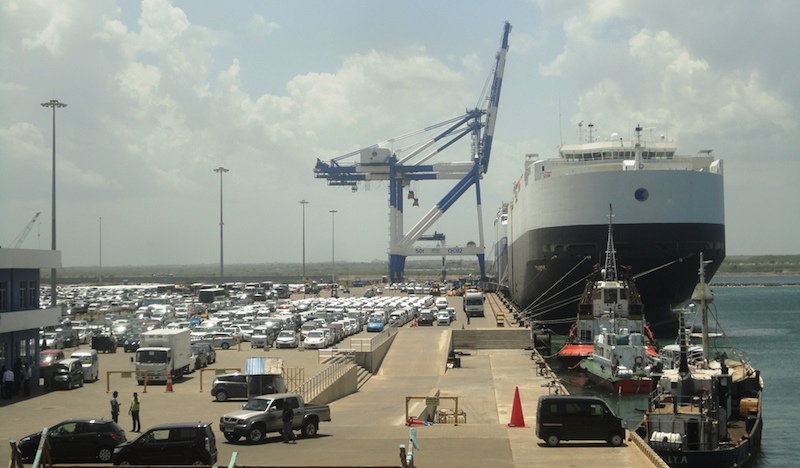
A cricket stadium was also built; again, a centrepiece surrounded by nothing but wilderness. It hosted a handful of matches during the 2011 Cricket World Cup and Twenty20 matches the following year, but for the most part stands empty. Sometimes it is hired out for wedding receptions.
Back then, it was clear that very little existed in Hambantota to justify the infrastructure expenditure. Hopes were, however, that it would be a case of build the infrastructure, and they will come.
Seven years on, it is clear that this was not to be the case, and the Hambantota experiment has been an abject failure. Unless, of course, it was all a spectacular ruse, destined to fail.
In recent weeks, a major investigation into the deal making surrounding the port was published by The New York Times, which pointed out that the facility’s fate in being handed over to China constitutes one of the most egregious examples of how Beijing is using loans and aids to curry strategic influence around the world: “The debt deal also intensified some of the harshest accusations about President Xi Jinping’s signature Belt and Road Initiative: that the global investment and lending program amounts to a debt trap for vulnerable countries…fuelling corruption and autocratic behaviour in struggling democracies.”
Hambantota port is near a major shipping route with tens of thousands of ships passing by annually. Yet only a handful choose to dock there; for example, only 34 docked in 2012. It cost $US1.5 billion to build, and is included in China’s Belt and Road Initiative, a vast program of infrastructure development in neighbouring countries. It underscores deep concerns, particularly in rival India, that China is trying to gain control of the region. In particular, it’s feared that China plans for the port are to use it as a military base.
In a bid to fend off these concerns, Sri Lanka last week announced it is moving its southern naval headquarters to the Hambantota port. Prime Minister Ranil Wickremesinghe said he had made it clear in talks with Chinese leaders that the port will not be allowed to be used by them militarily, and that the facility will remain under the control of the Sri Lankan Navy.
The move serves as a tacit acknowledgement that the port transforming into a military facility by another power is a distinct possibility.


